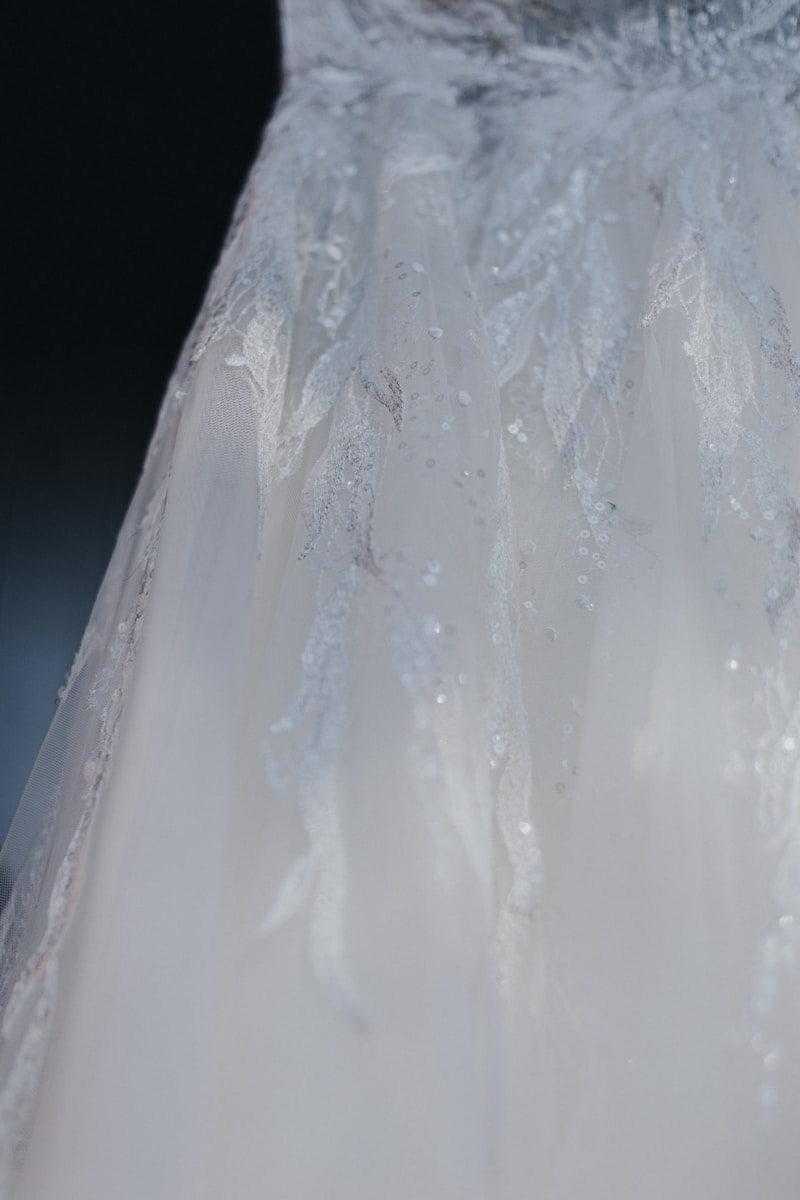Exploring Textural Contrasts in Bridal Gown Construction: A Comprehensive Guide
Exploring Textural Contrasts in Bridal Gown Construction: A Comprehensive Guide
Bridal gowns are more than just dresses; they are a manifestation of love, artistry, and tradition. One of the most intriguing elements in the design of these gowns is the use of textural contrasts. Understanding how different textures can be combined in bridal gown construction can enhance the visual appeal and overall elegance of the gown. In this article, we will delve into the world of textural contrasts in bridal gown construction, explaining why and how they are used, and offering tips for brides-to-be.
What Are Textural Contrasts?
Textural contrasts refer to the combination of different fabric types, finishes, and embellishments in a single piece of clothing. In the context of bridal gowns, this technique is employed to create visual interest and depth. The juxtaposition of smooth satin against intricate lace, or soft tulle against structured organza, creates a captivating aesthetic that can enhance the bride's beauty on her special day.
Why Use Textural Contrasts in Bridal Gowns?
There are several reasons why textural contrasts are a popular choice in bridal gown construction:
- Visual Interest: Combining various textures catches the eye and draws attention.
- Depth and Dimension: Textural contrasts can create the illusion of layers and volume.
- Highlighting Features: Certain textures can accentuate a bride's best features or the silhouette of the gown.
- Personal Expression: Different textures allow for personalization, making each gown unique to the bride.
Common Fabrics Used in Bridal Gown Construction
To understand textural contrasts, it’s essential to be familiar with the common fabrics used in bridal gown construction. Here are some popular fabrics:
| Fabric | Characteristics |
| Satin | Smooth, glossy surface, often used for the main body of the gown. |
| Lace | Delicate and intricate, adds romance and vintage appeal. |
| Tulle | Lightweight and airy; perfect for layers and skirts. |
| Organza | Stiff and sheer; adds structure and volume. |
| Chiffon | Soft and flowing; ideal for draped designs. |
| Crepe | Supple and stretchy; hugs the body beautifully. |
How to Combine Textures Effectively
Combining different textures in a bridal gown requires thoughtful consideration. Here are some guidelines:
- Balance: Ensure that the combination of textures is balanced. A heavily embellished bodice may require a simpler skirt to avoid overwhelming the design.
- Color Coordination: Choosing fabrics that complement each other in color can enhance the overall look. For instance, pairing a soft ivory lace with a cream satin can create a harmonized effect.
- Layering Techniques: Layering can create stunning visual effects. For example, a tulle overlay can soften the look of a structured satin gown.
- Embellishments: Consider adding embellishments like beads, sequins, or embroidery to highlight certain textures.

Popular Bridal Gown Styles Incorporating Textural Contrasts
Several bridal gown styles naturally lend themselves to textural contrasts:
A-Line Gowns
A-line gowns can benefit greatly from textural contrasts. Consider a satin A-line skirt paired with a lace bodice. This not only creates visual interest but also highlights the bride’s waist.
Mermaid Gowns
Mermaid gowns are fitted until the knee before flaring out. Combining a smooth crepe with textured lace panels can enhance the gown’s curves while adding a romantic touch.
Ball Gowns
The voluminous skirt of a ball gown allows for a multitude of textures. A corset-style bodice in intricate lace can be paired with a tulle skirt, creating a dreamy, ethereal look.
Choosing the Right Textures for Your Gown
When selecting textures for your bridal gown, consider the following:
- Season: Heavy fabrics might be suitable for winter weddings, while lighter fabrics are better for summer.
- Venue: Think about the venue of your wedding. A beach wedding may call for lighter materials like chiffon, while a formal ballroom may allow for luxurious satin.
- Personal Style: Choose fabrics and styles that reflect your personal style. If you love vintage, lace is a perfect choice; if you prefer modern, sleek silhouettes, opt for satin or crepe.
Consulting with a Designer
Working with an experienced bridal gown designer can make all the difference. They can guide you in combining textures effectively to achieve your desired look. Consider scheduling a consultation to discuss your vision.
Conclusion
Textural contrasts play a crucial role in bridal gown construction, offering various ways to enhance beauty and individuality. By understanding how to pair different fabrics and styles effectively, brides can create a unique and stunning look for their big day. Always keep in mind the season, venue, and personal style when selecting textures. And don't hesitate to consult with a designer for expert guidance. Remember, your bridal gown should not only reflect your personality but also make you feel beautiful and confident as you walk down the aisle.
Final Thoughts: As you embark on this journey, consider the various textural elements that can be combined to make your gown a masterpiece. Embrace your style, and don’t shy away from experimenting, as the right mix could create the spellbinding effect you’ve always dreamed of on your wedding day!
